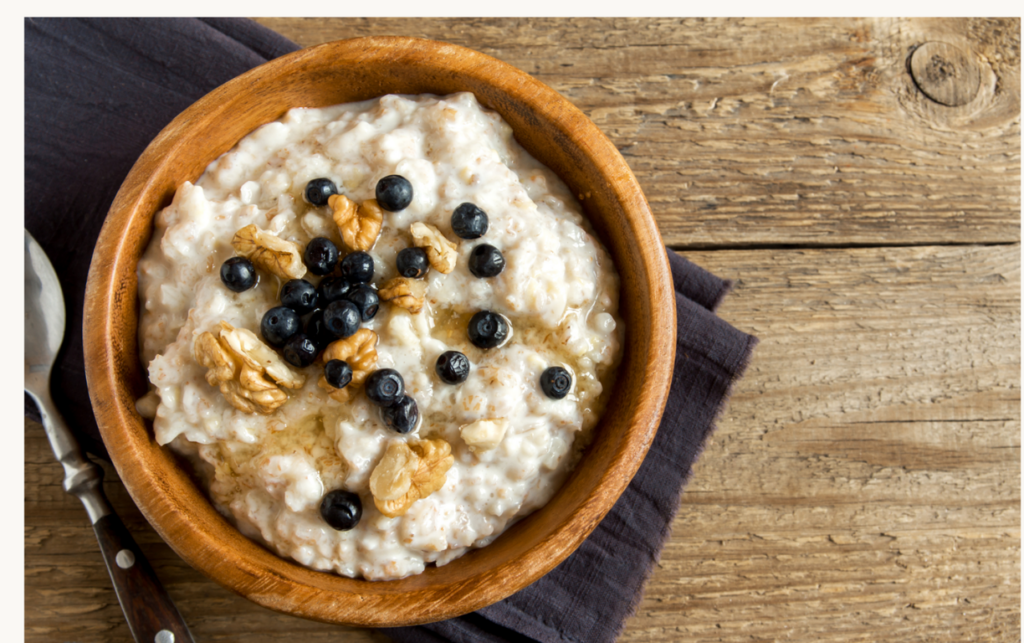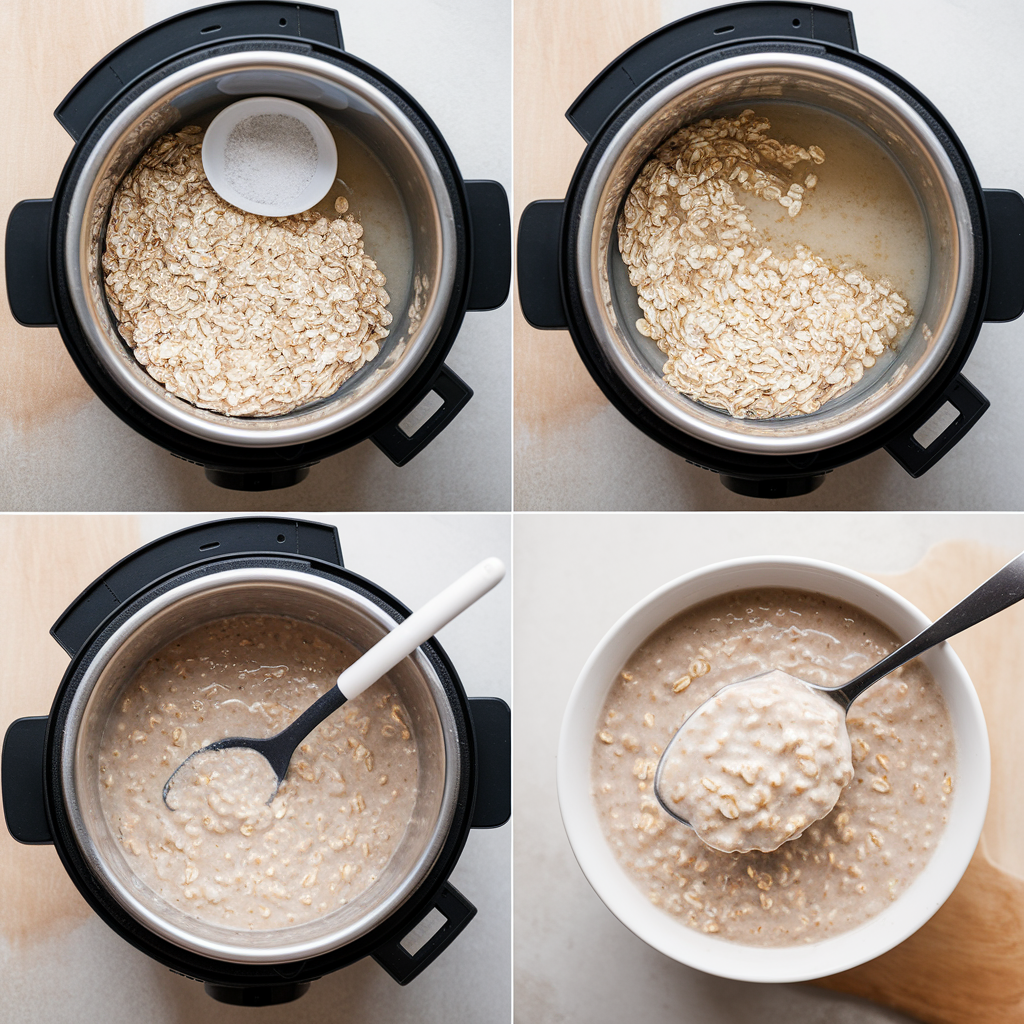Physical Address
304 North Cardinal St.
Dorchester Center, MA 02124
Physical Address
304 North Cardinal St.
Dorchester Center, MA 02124
Cooking oatmeal and porridge in a rice cooker is an easy way to whip up a hearty and nutritious breakfast. With just a few tips and tricks, you can achieve the perfect texture and flavor every time. Whether you prefer creamy oats or a thicker porridge, your rice cooker can help you create delicious meals without the fuss of traditional stovetop cooking.

Understanding the right rice cooker settings and the best water-to-oat ratio is crucial for achieving the ideal consistency. You’ll also discover how to enhance your oatmeal with various flavors and toppings, making each breakfast not just filling but also exciting. The health benefits of regular oatmeal consumption can contribute to your overall wellness, making this a smart choice for your morning routine.
Getting started with oatmeal and porridge in your rice cooker will simplify your mornings and provide you with nutritious options. You’ll enjoy experimenting with different oat types and additions to find your perfect breakfast style.
Choosing the right rice cooker can greatly enhance your oatmeal cooking experience. Key features and specific settings, such as porridge options, play an important role in ensuring perfectly cooked oatmeal.
Not all rice cookers come with a porridge setting, but it can make a significant difference. A rice cooker with this function allows for precise cooking times and temperatures, perfect for oatmeal.
With the porridge setting, the rice cooker adjusts cooking time and water absorption based on the type of oats. For example, quick oats require less time compared to steel-cut oats. This setting ensures your oatmeal is creamy and fully cooked without burning.
If you opt for a Zojirushi rice cooker, you’re in luck. Many models feature a dedicated porridge setting specifically designed for cooking oatmeal to perfection. This versatility helps you prepare a variety of breakfast options efficiently.
When selecting a rice cooker, consider key features that impact oatmeal preparation. Look for a model with a nonstick inner pot for easy cleaning and even cooking. A keep-warm function is also beneficial, so your oatmeal stays hot until you’re ready to eat.
Additionally, programmable options are helpful. This allows you to set your cooker ahead of time, making mornings easier.
Top brands like Zojirushi also offer features including adjustable water levels, which allow you to achieve your desired oatmeal consistency. Whether you prefer thick or soupy oatmeal, these options enhance your cooking experience.
Choosing the right rice cooker will make your oatmeal mornings quick and enjoyable.
Understanding the different types of oats can help you choose the best one for your oatmeal and porridge. Each type has a unique texture and cooking time that affects your final dish. Here are the main variations to consider.
Rolled oats are steamed and flattened, giving them a flaky texture. This processing allows them to cook faster than other types. They generally take about 5 to 10 minutes to prepare, making them popular for quick breakfasts. Their texture is soft and chewy once cooked.
On the other hand, steel-cut oats are whole oat groats chopped into smaller pieces. This method results in a chewy and hearty texture. Steel-cut oats require a longer cooking time, often around 20 to 30 minutes. They create a thicker, creamier dish compared to rolled oats. If you enjoy a substantial bite in your oatmeal, steel-cut oats are an excellent choice.
Quick oats are processed more than rolled oats, which means they cook even faster. They are pre-cooked, dried, and rolled thinner. This results in a smooth, softer texture that some find too mushy. Quick oats are ideal if you’re in a hurry, only needing about 1 to 3 minutes to prepare.
When using quick oats, your dish will have a thinner consistency. This may not be what you want if you prefer a thicker, chunkier feel in your oatmeal. If time is a factor, though, quick oats are a convenient option for a speedy meal.
Getting the right water to oat ratio is key for perfect oatmeal or porridge. This ratio affects the texture and flavor of your dish.
For regular oats, a common ratio is 2:1. This means you use 2 cups of water for every 1 cup of oats. This gives you a creamy and smooth consistency.
For steel cut oats, the ratio is higher, typically around 4:1. Use 4 cups of water for every 1 cup of oats. This helps prevent the oats from being too chewy.
Cooking time also plays a role. Regular oats take about 5 to 10 minutes to cook, while steel cut oats usually take 25 to 30 minutes.
You can experiment with these ratios. If you prefer thicker oatmeal, try reducing the water slightly. If you like it creamier, increase the water. Adjusting the water will let you achieve your desired consistency.
Tips for Success:
With the right ratio and some practice, you’ll be able to make delicious oatmeal or porridge every time.

Cooking oatmeal and porridge in a rice cooker requires understanding specific cooking times and utilizing features like the keep warm setting. Knowing these factors ensures that you achieve the perfect texture every time, whether you’re using rolled oats or rice porridge.
Different types of oats require varied cooking times. Here’s a quick guide to help you:
Keep in mind that cooking times can vary based on the rice cooker brand and settings. Always check the user manual for specific instructions related to cooking oatmeal or cooking porridge in your rice cooker.
The keep warm function on your rice cooker is a valuable tool. It helps maintain the porridge’s temperature without overcooking it. This feature is especially useful on busy mornings when time is tight.
Most rice cookers can maintain heat for up to 12 hours. This means you can prepare your oatmeal or rice porridge in the morning and enjoy it later without it becoming cold or dried out.
To maximize this feature, stir the porridge occasionally. This prevents the bottom from sticking and helps to maintain a consistent texture. If you prefer your porridge a bit creamier, add a splash of water or milk before serving.

You can easily boost the flavor and health benefits of your oatmeal and porridge by adding sweeteners, toppings, and extra ingredients. These enhancements not only make your meals more enjoyable but also improve their nutritional value.
Sweeteners can add a delicious touch to your oatmeal. Common options include honey, maple syrup, or agave nectar. A small amount can enhance sweetness without overpowering the dish. You might also try cinnamon or vanilla extract for extra flavor without added sugar.
For toppings, consider fresh fruits like bananas, berries, or apples. Nuts and seeds add texture and healthy fats. You can sprinkle some chia seeds or flaxseeds for a boost of fiber. Combining these toppings can create a multifaceted flavor profile, enhancing the aroma and overall enjoyment of your meal.
Including protein-rich ingredients can make your oatmeal more filling. A scoop of nut butter or a sprinkle of protein powder can transform your dish. Greek yogurt is another excellent choice for creaminess and additional protein.
Focusing on fiber is also important. Adding ingredients like chia seeds or oats can improve digestion and keep you satisfied longer. High-fiber options help maintain balanced blood sugar levels, which is essential for sustained energy. Together, protein and fiber elevate the nutritional profile, making your breakfast more balanced and nourishing.
Eating oatmeal regularly offers several health benefits.
Nutritional Powerhouse: Oatmeal is rich in essential nutrients. It provides vitamins, minerals, and antioxidants that support your overall health.
High in Fiber: Oatmeal contains soluble fiber, especially beta-glucan. This type of fiber helps lower cholesterol levels and can improve heart health.
Low Glycemic Index: Oatmeal has a low glycemic index, which means it helps keep blood sugar levels stable. This is beneficial for managing diabetes and preventing spikes in blood sugar.
Weight Management: Consuming oatmeal can help you feel full longer. This may reduce cravings and help with weight loss or maintenance.
Digestive Health: The fiber in oatmeal promotes healthy digestion. It helps regulate bowel movements and can prevent constipation.
Heart Health: Regularly eating oatmeal is linked to a reduced risk of heart disease. It can help lower blood pressure and improve cholesterol levels.
Incorporating oatmeal into your daily diet can be a tasty and healthy choice. Consider trying different recipes to keep your meals interesting. Whether you enjoy it sweet or savory, oatmeal can be a nutritious addition to your breakfast routine.
You can make your rice cooker work harder by experimenting with different grains and dishes. Not only can you use it for classic oatmeal, but also for creative meals like quinoa and congee. Here’s how to expand your cooking with these options.
Quinoa is a versatile grain that cooks well in a rice cooker. It has a light, nutty flavor and provides protein and fiber. To prepare quinoa, use a 2:1 water-to-quinoa ratio. Rinse the quinoa before adding it to your rice cooker for the best result.
Congee, a rice porridge popular in Asian cuisine, is another excellent option. Use short-grain rice, adding about 6 cups of water for every cup of rice. Allow it to cook for 1-2 hours, stirring occasionally for a creamy texture. Enhance the taste by adding ginger, scallions, or soy sauce.
Your rice cooker can do much more than just cook rice and oatmeal. It can help you create delicious rice porridge that is perfect for breakfast or any meal. With different grains, you can prepare hearty dishes every day.
Try cooking various grains like millet, barley, or even multigrain blends. Each brings a unique flavor and texture. You can add fruits, nuts, or spices to make your porridge more exciting.
Using the porridge setting allows for a slow cooking process, which helps blend flavors well. Many recipes suggest letting the grains soak beforehand to improve softness. Don’t hesitate to get creative; the rice cooker can handle it!
Here are some common questions you might have about cooking oatmeal and porridge in a rice cooker. These tips focus on techniques, ratios, and specific uses that can help you get the best results.
Yes, you can cook steel-cut oats in a rice cooker without a porridge setting. Use the regular cooking function and expect a longer cooking time. Steel-cut oats typically take about 30 to 45 minutes to achieve a creamy texture.
A standard ratio for oatmeal is 1 cup of oats to 2 cups of water or milk. This ratio can vary based on personal preference and the desired consistency. For creamier oatmeal, you might add a little more liquid.
To prevent boiling over, ensure you do not fill the cooker too full. Leave some space at the top. Also, you can stir the mixture halfway through cooking to reduce foam and adjust the temperature if necessary.
Yes, when cooking rolled oats, you might adjust the water ratio to 1 cup of oats to 1.5 cups of liquid for a thicker texture. For creamier porridge, use 2 cups of water or milk. This will help you achieve your preferred consistency.
Many recipes exist for oatmeal in a rice cooker, including variations with fruits, nuts, and spices. You can incorporate ingredients like cinnamon or bananas for added flavor. Check specific recipe guides for detailed instructions.
Yes, you can cook oatmeal overnight in a rice cooker using a timer function if available. Set it to start cooking in the morning. Make sure to check that your rice cooker is suitable for long cooking times to avoid overcooking.